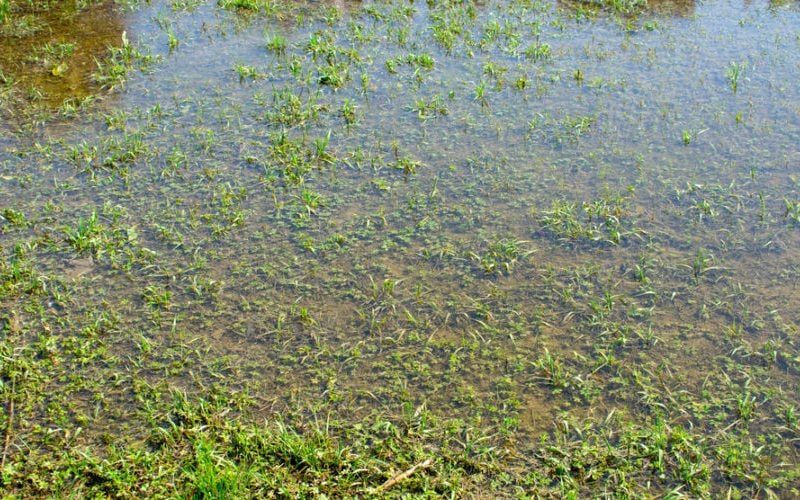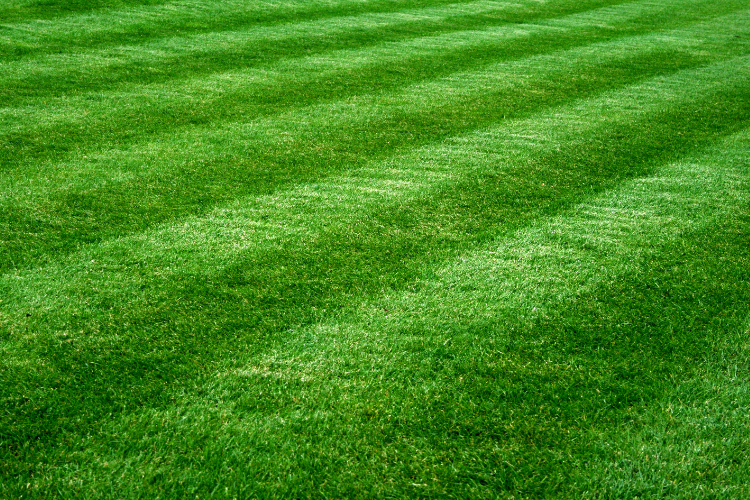A waterlogged lawn is most gardener’s worst nightmare! Usually occurring over winter, heavy rainfall can leave lawns soggy and muddy underfoot. Look for large pools of water or a squelchy feeling as you walk over the grass. If your lawn has fallen victim to waterlogging, avoid walking on it as much as you can and make sure to follow these key action steps.
Common Problems That Cause Flooding in Lawns
A waterlogged lawn is usually caused by a few main issues, which are all related to water not being able to drain through the soil. Compaction is a large factor, as soil that is tightly packed has no room for water to drain through it. Compacted soil happens in high-activity areas, such as pathways or where the children play in the garden. Soil that is rich in clay is also prone to flooding, as the soil is denser and doesn’t allow a flow of air and water as easily.
A poor root system can also be the cause of waterlogging, as you need a thick, well-developed and complex root system to be able to absorb the water falling on the lawn. You can tackle this by overseeding in spring or early autumn, which will create a thicker lawn.
How To Avoid Getting a Waterlogged Lawn
There are certain steps you can take that will help you avoid getting a waterlogged lawn, even if the rainfall is particularly heavy. Regular aeration of your lawn is key, as that allows plenty of drainage and air into the deeper levels of the soil. Hollow tine aeration is best, as that creates the best airflow and drainage system for the lower levels of soil. Once the lawn has been aerated, you can re-seed to allow the seeds plenty of opportunity to germinate and create a thicker, more complex set of roots.
By observing your lawn, you’ll be able to note the problem areas which pool water more than others. This might be due to an uneven lawn, where the water has nowhere to run, or through a particularly compacted area. These areas could be levelled out and aerated to prevent waterlogging from happening.
How to Drain and Fix a Lawn
The first thing to do once your lawn is waterlogged is to make sure no one walks over it, as that can churn up the grass and make the problem much worse than it was to begin with. Wait for the majority of the water to evaporate, but if there is any left that won’t go, gently push it toward the borders of your lawn or a drain with a broom or brush. Make sure the soil is moist but not wet before you take any further action on it.
Spike the lawn with a garden fork, creating large holes in the lawn. After the initial spiking and draining, using a hollow tine aerator on the lawn will remove further plugs of soil. This should allow the majority of the water to drain through. You can then add a top dressing of horticultural sand or compost to absorb extra moisture and build up a healthier lawn. If the grass has been ruined, you can then take the next step of over-seeding and applying a further layer of topsoil or compost.
If your lawn needs aeration, over-seeding or any other lawn care, don’t hesitate to contact our local lawn care experts or check out more lawn care tips and advice from Greensleeves.





